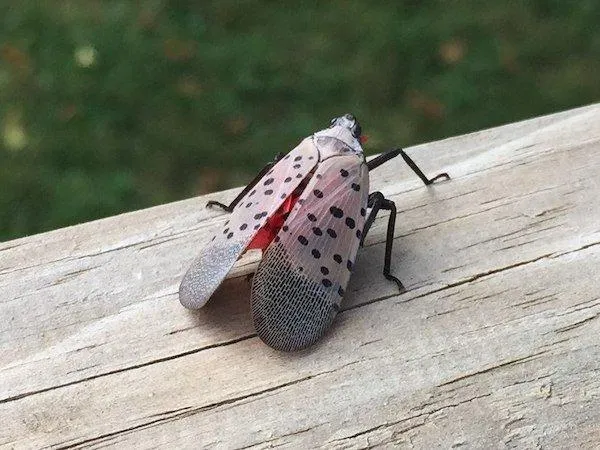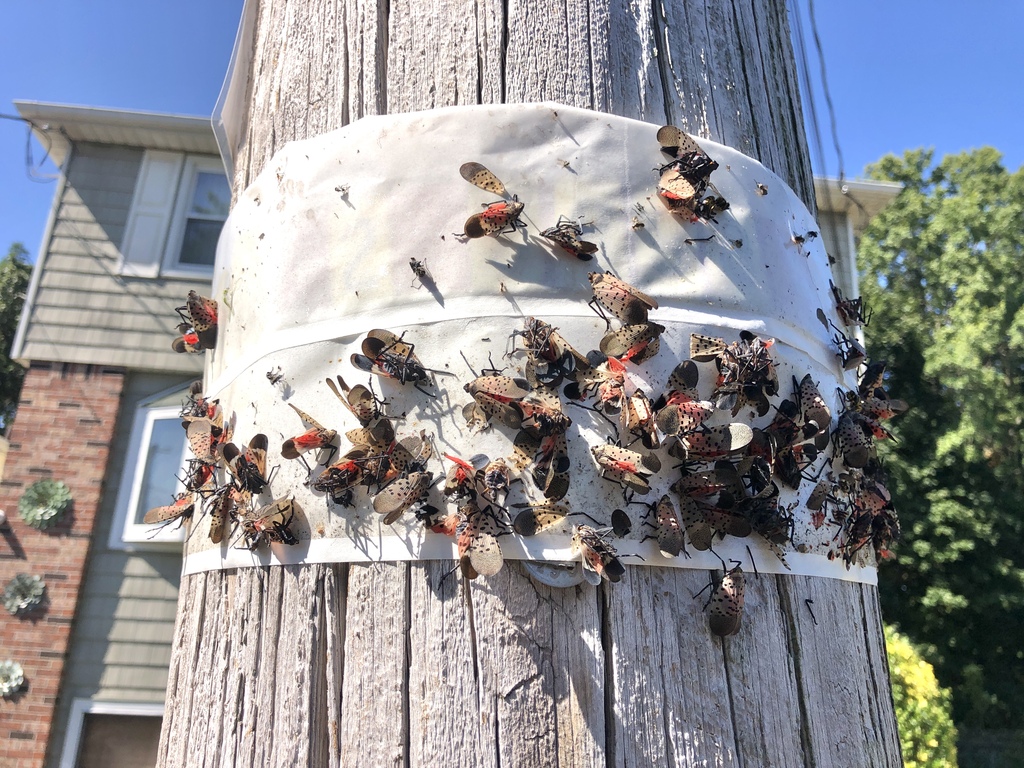New York City is no stranger to invasive species, and the latest uninvited guest is the spotted lanternfly. This colorful insect, native to Asia, has been making headlines for its destructive potential to crops and trees. But how much of a threat does it pose to the urban forest we cherish here in NYC?
The spotted lanternfly goes through several life stages, starting as egg masses laid on smooth surfaces like tree trunks and vehicles. These hatch into nymphs, initially black with white spots before developing red patches. They eventually mature into the striking adults with spotted wings we often see hopping around.

These lanternflies feed by piercing the bark of trees and sucking out their sap. This can weaken trees, especially younger or stressed ones, making them vulnerable to diseases and other pests. Additionally, the lanternflies produce a sugary substance called honeydew, which can attract sooty mold, a fungus that further harms trees by hindering photosynthesis.
The spotted lanternfly has a particular fondness for the tree of heaven, an invasive species that unfortunately thrives in NYC. While seeing these pests munching on trees of heaven might not be ideal, it’s a bit of a silver lining. Their preference for this non-native tree could mean that our native species are somewhat protected from their feeding frenzy.
In NYC, spotted lanternflies have been found on the Tree of Heaven, maple trees (especially Norway maples), and occasionally on other species like willow, birch, poplar, and fruit trees.
How to Help
- Learn to identify spotted lanternflies: Familiarize yourself with their appearance at different life stages so you can recognize them.
- Report sightings: If you spot a spotted lanternfly, report it to the New York State Department of Agriculture and Markets by emailing spottedlanternfly@agriculture.ny.gov or using their online reporting tool.
- Deal with the Tree of heaven: If you have a tree of heaven on your property, consider removing it to discourage lanternflies from settling in.
- Prevent the spread: Avoid transporting firewood or other materials that could harbor lanternfly egg masses.

How to Get Rid of the Spotted Lanternfly
While the spotted lanternfly isn’t currently wreaking havoc on NYC’s trees, it’s important to be proactive to prevent them from spreading and damaging the environment. Here are some steps you can take to help control their numbers:
- Squash and Scrape:
- If you see a spotted lanternfly, don’t hesitate to squish it! They’re easy to catch and kill by hand or with a shoe.
- During the fall and winter, look for their egg masses on tree trunks, rocks, or any smooth surface. They look like smears of mud or putty. Scrape them off into a container of hand sanitizer or rubbing alcohol to kill the eggs.
- Trap and Dispose:
- Use sticky tree bands around the trunks of trees, especially trees of heaven. Nymphs will get stuck as they climb up to feed.
- You can also create homemade traps using plastic bottles. Check online for instructions on how to make a simple and effective trap.

- Remove Tree of Heaven:
- This is the spotted lanternfly’s favorite host tree. If you have tree of heaven on your property, consider removing it to discourage the insects from settling in. Be sure to treat the stump to prevent regrowth.
- Insecticides (Use with Caution):
- Insecticides can be effective, but they should be used as a last resort and with caution to minimize harm to beneficial insects and the environment. Please call a professional tree service before using these.
- If you choose to use an insecticide, consult with a professional pest management company to select the appropriate product and application method.
- Report Sightings:
- If you spot a spotted lanternfly or an egg mass, report it to the New York State Department of Agriculture and Markets by emailing spottedlanternfly@agriculture.ny.gov or using their online reporting tool. Your reports help authorities track the spread and take appropriate action.
While the spotted lanternfly is unwelcome, we can limit its impact on our beloved trees. By staying informed, reporting sightings, and taking preventative measures, we can work together to protect our urban forest for future generations. If you see the spotted lanternfly

